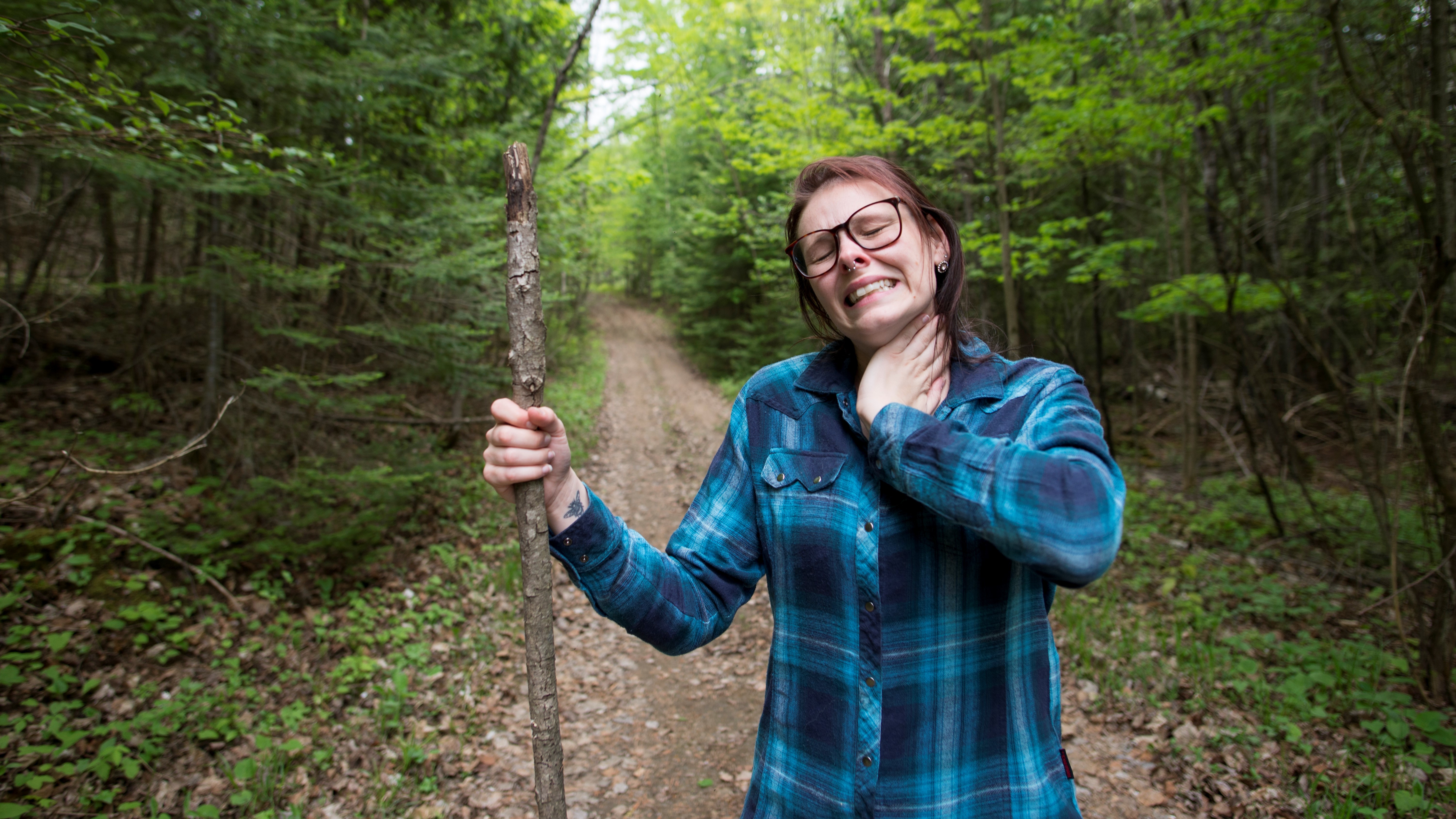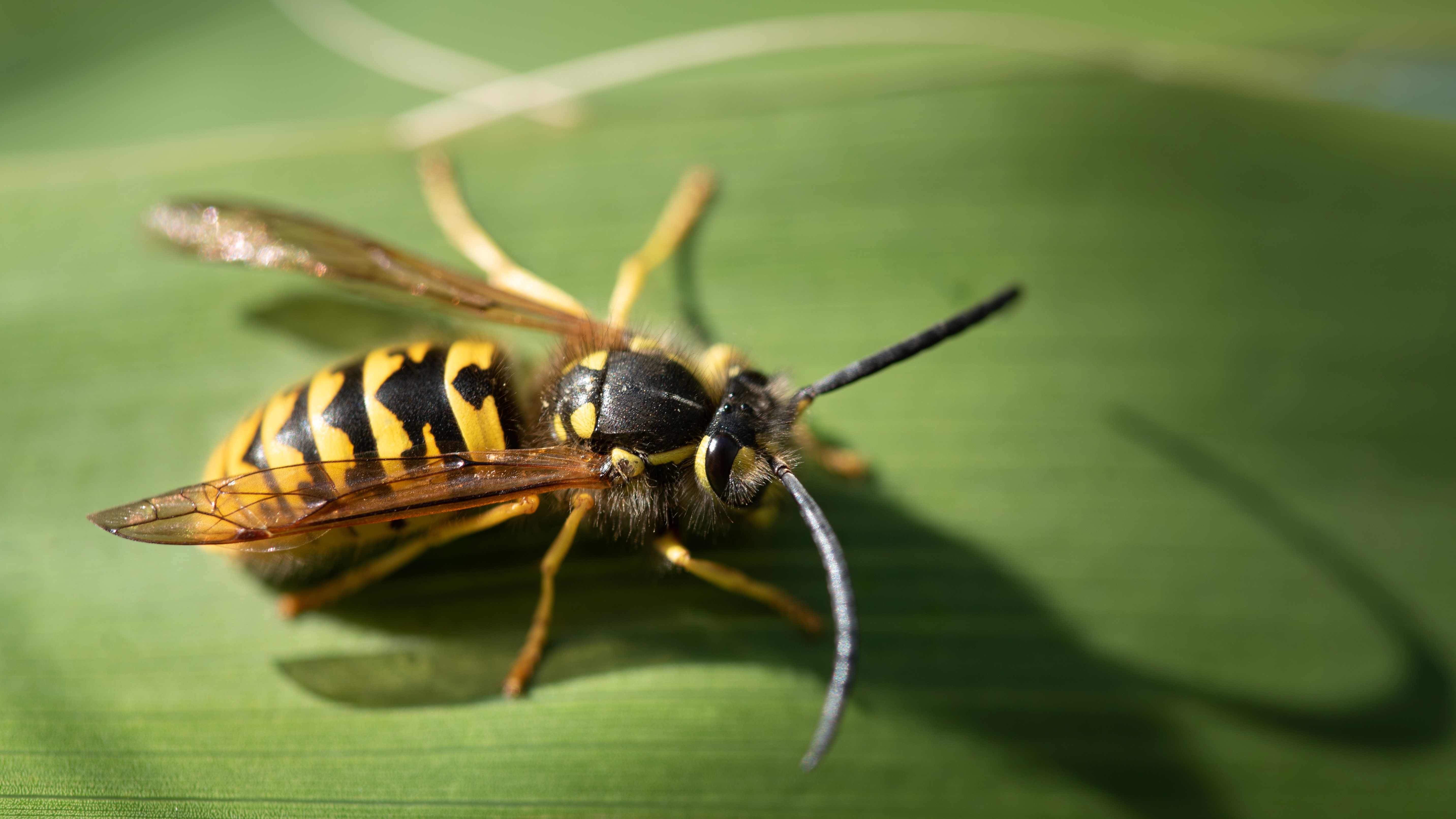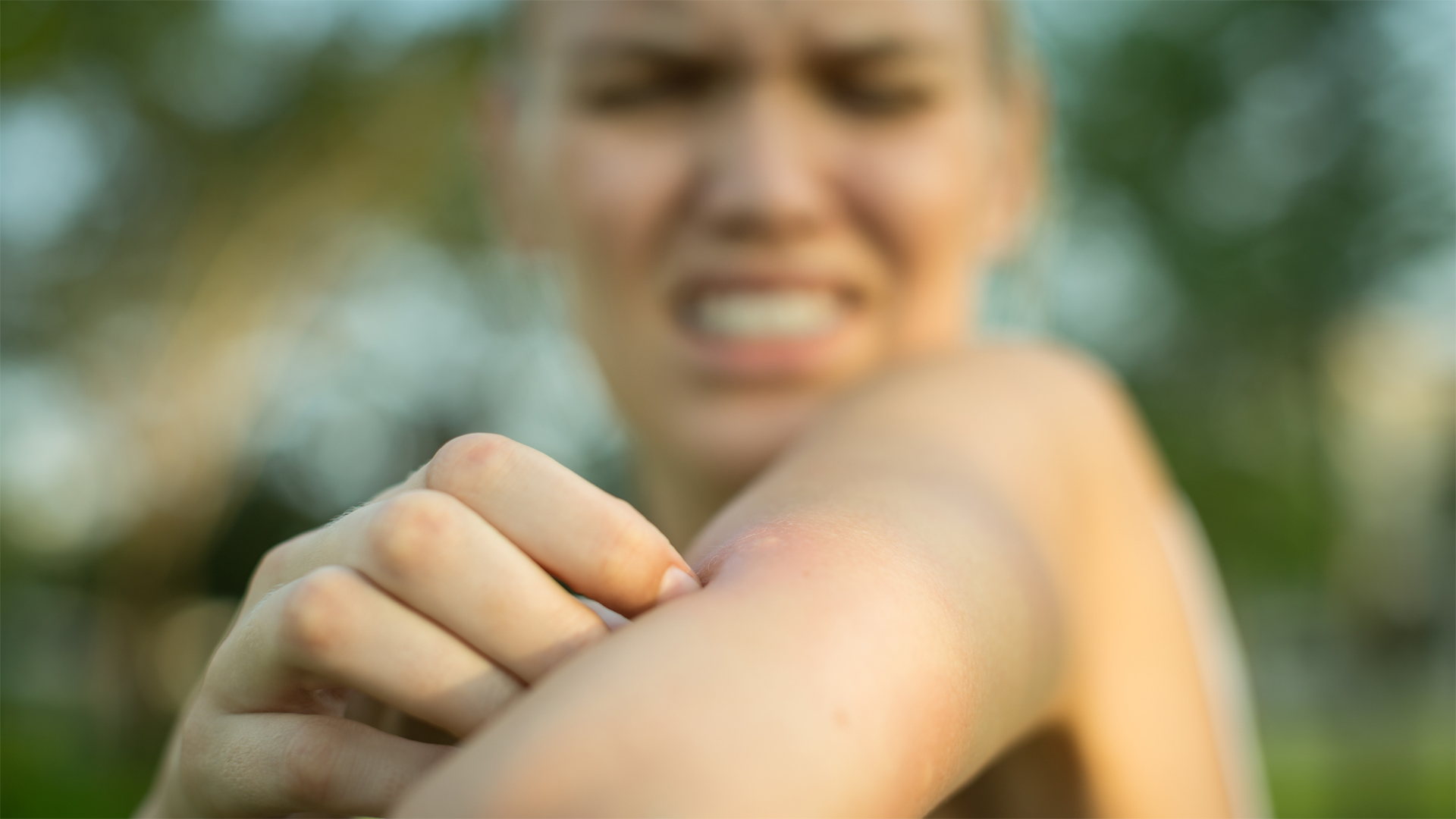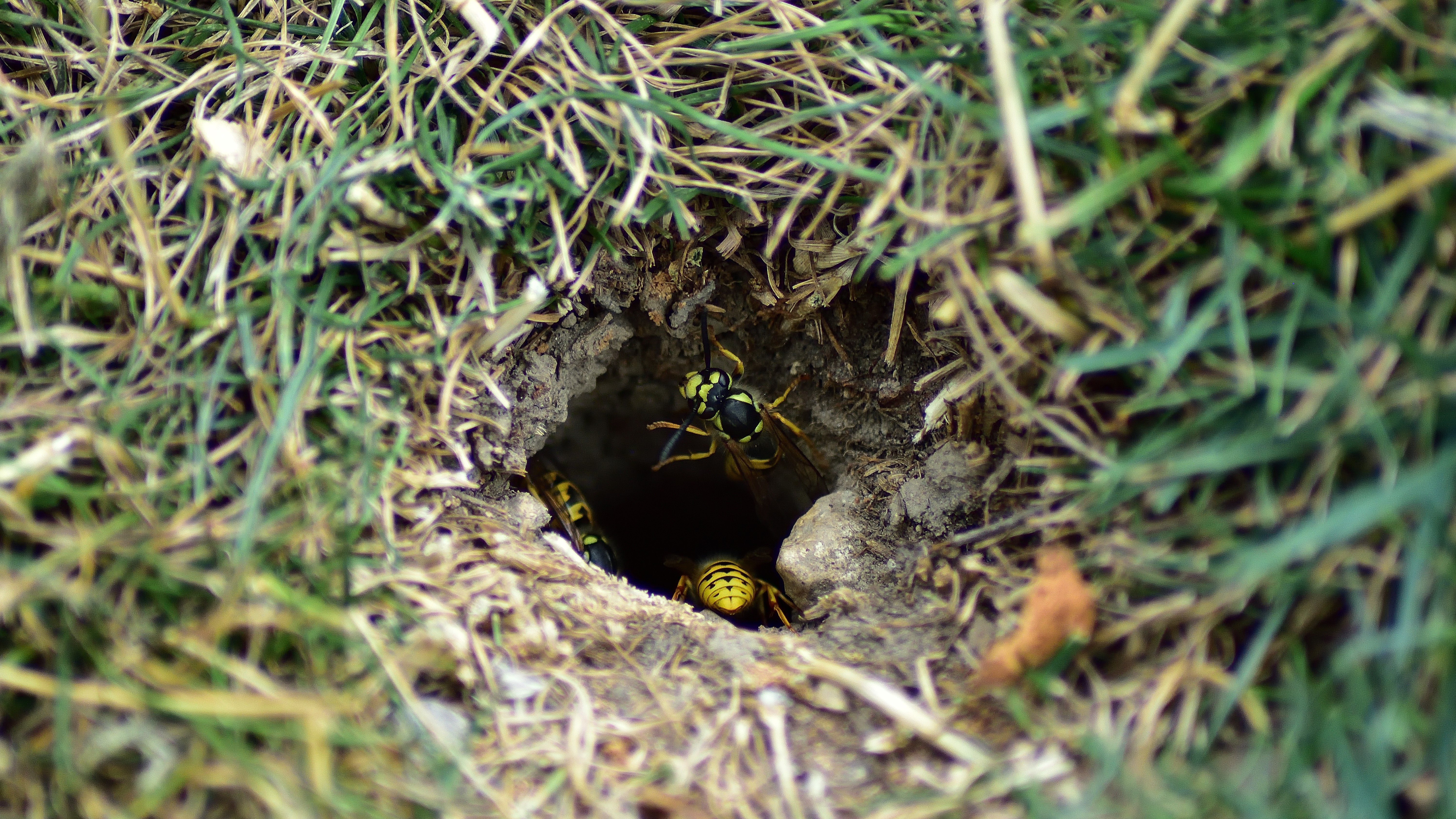Hikers beware: it's yellowjacket season and they're pure evil
Yellowjackets are a pugnacious peril of late summer hiking – here’s how to avoid them on the trail

A few years ago, I was hiking up Grouse Creek Trail near Vail with a small group of friends. Suddenly, I heard shrieks from my friend Ronnie behind me and turned to see her arms flailing around her head and she darted off into the undergrowth.
Ronnie was being attacked by yellowjackets, those sly, viscous winged creatures that make their cousins the common wasp look docile in comparison. She already had several stings on her hands and the attack went on for several minutes as they pursued her, and the rest of our group, up the trail.
Yellowjackets are evil bastards and starting in August and lasting until the first frost (or through the winter if you’re in the southeast), you’ll want to beware of disturbing them when you’re tramping down the trail in your hiking boots.

What are yellowjackets?
Yellowjackets are a species of predatory (yes, predatory) wasp but they’re not like your everyday wasp which nests up high and is typically easy to avoid unless you make the mistake of putting your apple core in the mesh pocket of your backpack, as I recently learned.
Unlike regular wasps, yellow jackets have smooth, hairless, long bodies with distinctive yellow and black markings, sharp stingers and long wings. They live in colonies and nest underground, which is why they’re often disturbed by hikers and horseback riders. All female yellowjackets have stingers and will use them if needed.
Yellowjackets lay their eggs in the late spring and early summer and shortly after that, seek out fruit, sugar-rich flower nectar, tree sap and meat that they can feed on and chew up to feed their larvae. And that, my friends, is why you should seriously reconsider that ham sandwich in your packed lunch.

Are yellowjackets aggressive?
Yes, yellowjackets are aggressive. If you’ve been following along with some of our other wildlife safety advice, such as what to do if you meet a bear on the trail or how to avoid being gored by a bison, you’ll be used to us cautioning you that most wildlife isn’t actually aggressive. As long as you give that mountain lion or moose a wide berth, there’s no reason why it would attack you. The same is not true for yellowjackets.
All the latest inspiration, tips and guides to help you plan your next Advnture!
Yellowjackets are a bit like the worst bully at school after a few beers – hostile and belligerent. As the summer wears on and their natural food sources of flowers and insects dry up, these pugnacious tormentors get hangry (don’t we all?) and turn into scavengers. When you come clumping along in your boots, they’re already irritable and upon sensing you are carrying a feast of trail mix, oranges and jerky, they’ll descend en masse.
If you’re hiking in a group, as we were, they’ll typically hone in on just one member. Not only will a yellowjacket sting you multiple times releasing venom into your skin, they’ll also release pheromones into the air to encourage their cronies to do the same. An attack can go on for several minutes and trying to shoo them away can only make things worse. If an attack feels personal, it’s because it is.
Like I said, evil bastards.

What happens if you get stung by a yellowjacket?
Getting stung by a yellowjacket really hurts. Typically, the area or areas where you’ve been stung will be red, swollen, painful and itchy, possibly for several days. The only real upside is that, unlike bees, they don't usually leave their stinger in your skin. The Mayo Clinic recommends treating it like any bee or wasp sting by cleansing the affected area, icing it to reduce inflammation and applying a soothing ointment like calamine lotion.
It is possible for anaphylaxis to occur with a yellowjacket sting, in which case immediate medical care is required. If you are the unfortunate recipient of multiple stings, things can get very serious and you should also seek medical attention.
Other than that, you’ll probably just be very grumpy for a few days and vow never to hike on that trail again.

How to avoid being stung by a yellowjacket
Yellowjacket stings can be hard to avoid, what with them lurking unseen underground until it’s time to pounce, however there are a few things you can do to minimize the damage.
1. Cover your skin
Sadly, even your best insect repellent won’t work against yellowjackets, but you can lessen the risk by covering your skin better. Choose long and slightly loose hiking pants over shorts, and wear a long sleeved hiking shirt in place of a T-shirt and a hat to cover your head. As the weather cools, you can even wear hiking gloves to protect more of your skin.
2. Be aware and move away fast
Keep your wits about you when hiking during yellowjacket season. That means leave the headphones at home and be on the lookout for these winged menaces. If you spot what looks like a swarm of yellowjackets, move out of the area quickly.
3. Keep your food and drinks sealed
Remember, yellowjackets are attacking you on purpose, but it’s not because they hate you – they’re probably looking for food. Keep your packed lunch and any sugary snacks and beverages well-sealed and only break them out when you’re sure it’s safe. Make sure any sugary wrappers and remnants get sealed in a paper bag and placed back inside your backpack, and carry wet wipes or hand sanitizer to remove any yummy sugary residue from your skin.

4. Avoid perfume and bright colors
We don’t really feel like we should have to say this, but don’t wear perfume on the hiking trail and avoid strongly scented soaps and deodorant while you’re at it, as these can attract yellowjackets. They also seem to love bright yellow and floral patterns, so dress in more demure tones even if it’s not in your flamboyant nature.
5. Stay calm
Just so we’re clear, I’m certain that I could not manage this myself, but if a bombardment occurs, your best course of action is to try to stay calm and not start squealing and thrashing around, even though that’s what you’ll want to do. Try to keep breathing and move away from the area quickly and quietly.
6. Warn others
Finally, if you do encounter yellowjackets on a hiking trail, it means they have nested nearby and it’s practically your civic duty to warn other hikers so they don’t fall foul to the same fate as you. Leave a note at the trailhead, post a warning on social media and tell park rangers so that other hikers can choose to avoid the area.
Julia Clarke is a staff writer for Advnture.com and the author of the book Restorative Yoga for Beginners. She loves to explore mountains on foot, bike, skis and belay and then recover on the the yoga mat. Julia graduated with a degree in journalism in 2004 and spent eight years working as a radio presenter in Kansas City, Vermont, Boston and New York City before discovering the joys of the Rocky Mountains. She then detoured west to Colorado and enjoyed 11 years teaching yoga in Vail before returning to her hometown of Glasgow, Scotland in 2020 to focus on family and writing.

